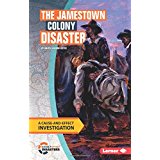2018 School Spending Survey Report
The Jamestown Colony Disaster
9781512411164.
ea vol: 40p. (Cause-and-Effect Disasters). chart. diag. ebook available. further reading. glossary. index. maps. notes. photos. Lerner. Nov. 2016. lib. ed. $30.65.
COPY ISBN
Sherman explores the nineteenth-century Irish potato disaster in four succinct chapters addressing its economic and political causes and effects. She provides historical background before relating the major events and their far-reaching aftermath (including modern research tracing the original source of the crop's disease to Mexico). Numerous photographs/illustrations, diagrams, sidebars, and a clear appended flow chart round out the presentation. Reading list, websites. Bib., glos., ind.
RELATED
ALREADY A SUBSCRIBER? LOG IN
We are currently offering this content for free. Sign up now to activate your personal profile, where you can save articles for future viewing





Be the first reader to comment.
Comment Policy:
Comment should not be empty !!!